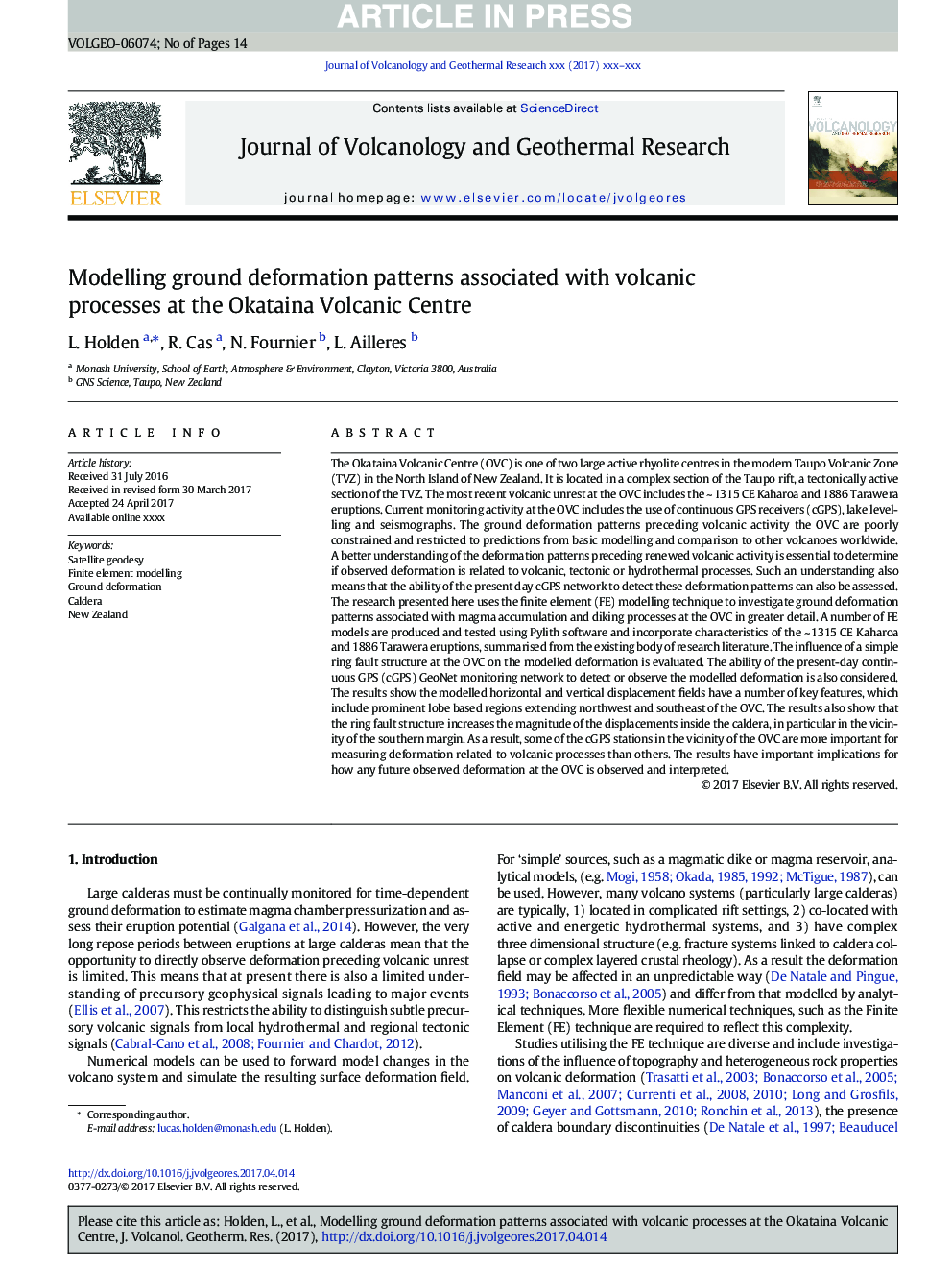| Article ID | Journal | Published Year | Pages | File Type |
|---|---|---|---|---|
| 5783719 | Journal of Volcanology and Geothermal Research | 2017 | 14 Pages |
Abstract
The research presented here uses the finite element (FE) modelling technique to investigate ground deformation patterns associated with magma accumulation and diking processes at the OVC in greater detail. A number of FE models are produced and tested using Pylith software and incorporate characteristics of the ~Â 1315Â CE Kaharoa and 1886 Tarawera eruptions, summarised from the existing body of research literature. The influence of a simple ring fault structure at the OVC on the modelled deformation is evaluated. The ability of the present-day continuous GPS (cGPS) GeoNet monitoring network to detect or observe the modelled deformation is also considered. The results show the modelled horizontal and vertical displacement fields have a number of key features, which include prominent lobe based regions extending northwest and southeast of the OVC. The results also show that the ring fault structure increases the magnitude of the displacements inside the caldera, in particular in the vicinity of the southern margin. As a result, some of the cGPS stations in the vicinity of the OVC are more important for measuring deformation related to volcanic processes than others. The results have important implications for how any future observed deformation at the OVC is observed and interpreted.
Related Topics
Physical Sciences and Engineering
Earth and Planetary Sciences
Geochemistry and Petrology
Authors
L. Holden, R. Cas, N. Fournier, L. Ailleres,
